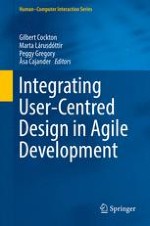2016 | OriginalPaper | Chapter
2. User Integration in Agile Software Development Processes: Practices and Challenges in Small and Medium Sized Enterprises
Authors : Oliver Stickel, Corinna Ogonowski, Timo Jakobi, Gunnar Stevens, Volkmar Pipek, Volker Wulf
Published in: Integrating User-Centred Design in Agile Development
Publisher: Springer International Publishing
Activate our intelligent search to find suitable subject content or patents.
Select sections of text to find matching patents with Artificial Intelligence. powered by
Select sections of text to find additional relevant content using AI-assisted search. powered by
